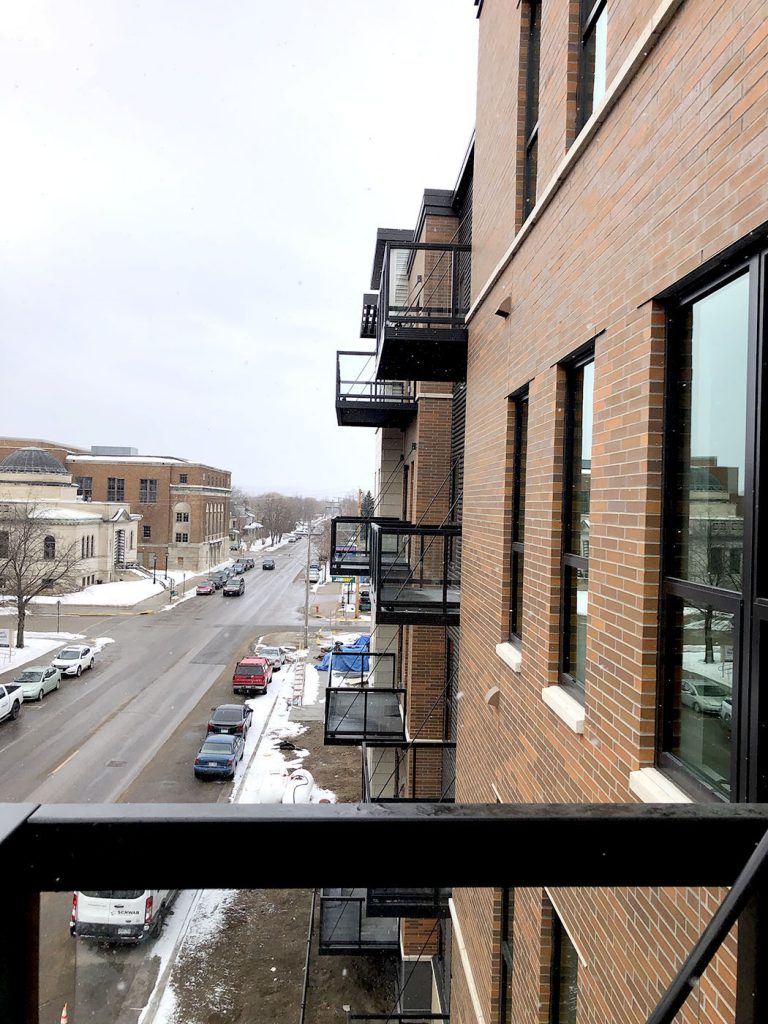The residential scene in Winona caters to different groups of people, predominantly college students from August to May.
A new downtown apartment complex called Main Square Winona is aiming to be the updated hub for business professionals and the wealthy in town.

According to Tom Hoseck, Main Square Winona’s lead property manager, the complex will have two primary buildings: the Landmark on Main and 5th Streets and the Cornerstone, which is on Main and 4th.
While Landmark is housing with one, two- and three-bedroom units, Cornerstone also has space for retail offices.
Amenities like a fitness center, rooftop terraces and meeting room will be shared between residents, Hoseck said.
Speaking about the draw for living at Main Square, Hoseck mentioned proximity.
“Living here gives people everything they could need within walking distance,” Hoseck said. “Plus, we’ll be adding conveniences for residents like an orthodontist, hair salon and a walk-in clinic. We want people who live here to feel like they never have to leave.”
A complex marketed as luxury must live up to that in rental prices.
An average one-bedroom rental in the Landmark building runs $1,300 per month For the Cornerstone building, a one-bedroom suite begins at $875 a month.
In a city that’s predominantly college students, how do these rates stack up to dorms?
And would the apartments appeal to college students?
According to Paula Scheevel, Winona State University’s director of housing and residence life, the dorms are a better price.
Unlike the price of the new apartment complexes, the rates of dorms were decided by the original cost to build and maintain the dorm.
In WSU’s Quad, which is a building made up of four separate other dorms, an average room is $2,800 for the academic year.
While college students pay off all charges in chunks, the average rent would come out to $350, per the housing and residence life yearly budget.
They also have stipulations through the MinnState system that all dorms must be built to withstand 100 years of residents and be paid off in 20 years.
Because Scheevel has been in her position for 16 years, she also has data on retention rate in the dorms.
“Thirty percent of people who live in res halls are returners, and that adds up to about one third of the overall student population,” Scheevel said.
She expounded on why she thought the university had those numbers.
“It’s ultimately about the value of the dollar. Our convenient location, dining plan and community in res life makes it a top choice.”
In terms of how the dorms stack up to the new apartments, Scheevel said she didn’t think Main Square Winona aimed to be for college living.

“To my knowledge, the complexes are geared toward those who are well-off and looking for housing not directed at college students,” Scheevel said.
To live in the Cornerstone, which is the cheaper of the two luxury complexes, for one school year, it would be a 150 percent increase over residence halls at the university.
And that’s just an average dorm room cost.
By comparing the cost of Main Square Winona to the most upscale dorms on campus, Kirkland-Haake, an average room in the four-person complex is $3,650.
Calculated out, monthly rent from a dorm to this luxury complex would increase by 91 percent.
Depending on where you live, you get what you pay for.
Question is, who’s willing to pay that much?